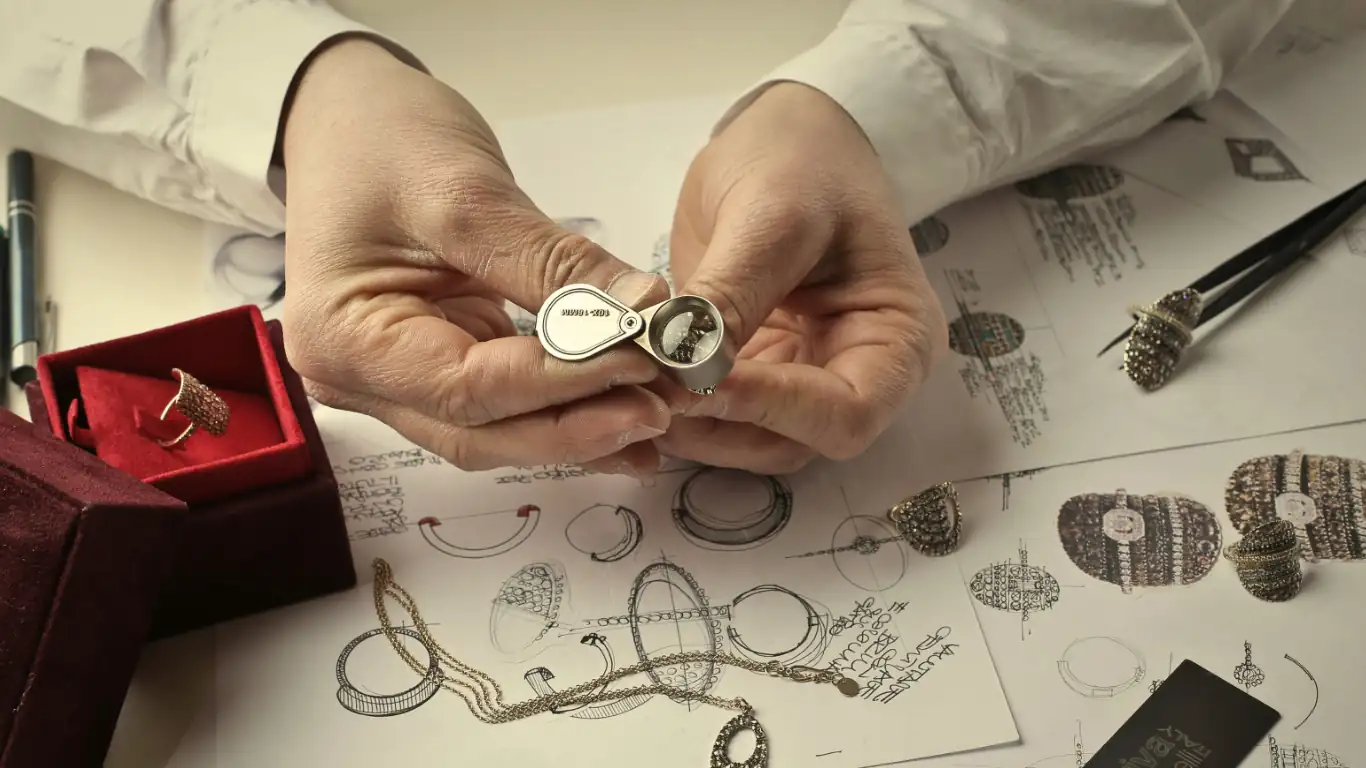When you buy a gold necklace, you want to make sure it’s real 14K gold. Not only does it ensure you’re getting what you paid for, but it also matters for durability, value, and your overall satisfaction with the jewelry. Here are some easy ways to check if your 14K gold necklace is genuine without needing fancy equipment or expert knowledge.
Check the Stamps and Markings
Start by examining your necklace for stamps or markings. Authentic 14K gold jewelry usually has a stamp, often found on the clasp or a small plate near the clasp. Look for marks like “14K” or “585.” The “14K” stamp indicates that the necklace is 14 karats, which means it contains 58.5% pure gold (585 out of 1,000 parts). The golden jewelry could also be 18K. Earlier we compared 14K vs. 18K gold, if you need to know what’s better.
Use a Magnet

Gold isn’t magnetic, so if a magnet sticks to your necklace, it’s likely not 14K gold. Grab a small magnet and hold it near your necklace. If it gets pulled towards the magnet, there’s a good chance it’s not genuine gold. However, some clasps or other components might contain non-gold metals, so use this test in combination with others.
Try the Float Test
Gold is dense, so it sinks in water. Fill a bowl with water and gently place your necklace in it. If it floats, it’s not real gold. If it sinks, that’s a good sign. Remember, while this test can be a helpful indicator, it’s not completely foolproof. Some other materials might also sink, so it’s good to use this method alongside other tests if you’re still unsure about your necklace.
If in doubt, it’s always a good idea to take your jewelry to a professional to have it checked out. This way, you can be sure of what you have and enjoy your gold necklace with peace of mind.
Inspect for Discoloration

Look at the necklace for any signs of discoloration. Real 14K gold holds its color well over time, while fake gold might start to show wear or fade, revealing a different color underneath. Check the areas that get the most friction, like where the clasp rubs against the chain.
Test with Makeup
Here’s a trick you can do at home. Put some liquid foundation or powder on your skin, let it dry, and then rub your gold necklace over it. If it leaves a black or dark mark, it might not be real gold. This happens because certain metals react with makeup, while genuine gold doesn’t. Also, real golden jewelry can leave marks on your skin, if you wonder why gold jewelry can turn the skin black or green.
Use a Jeweler’s Loupe
If you have a jeweler’s loupe or a magnifying glass, use it to get a closer look at your necklace. Look for signs of plating, rough edges, or irregularities in the metal. Genuine 14K gold tends to have a smooth, uniform appearance, while fake gold might show signs of poor craftsmanship.
Ask a Professional

If you’re still unsure, take your necklace to a jeweler or a professional appraiser. A jeweler is someone who works with jewelry every day. They know gold and other metals inside and out. If you have any doubts about your necklace, a jeweler can give you the facts. They have special tools and tests that can quickly tell if your necklace is real gold.
To get started, find a jeweler or a jewelry store in your area. You can check online reviews to see what others say about their service. Look for a place that has a good reputation and has been in business for a while. This way, you know they are experienced and reliable.
If the jeweler finds that your necklace isn’t real gold, don’t worry. They can often tell you what it’s made of and how much it’s worth. If you bought it from a store, you might be able to get a refund or exchange it for something else. Even if it’s not gold, it might still be a nice piece of jewelry to wear.
With these tips, you can get a good idea of whether your 14K gold necklace is real. Keep in mind that some methods aren’t foolproof, so it’s best to use a combination of tests or seek professional advice if you have any doubts. By following these steps, you can feel more confident about the authenticity of your gold jewelry.

